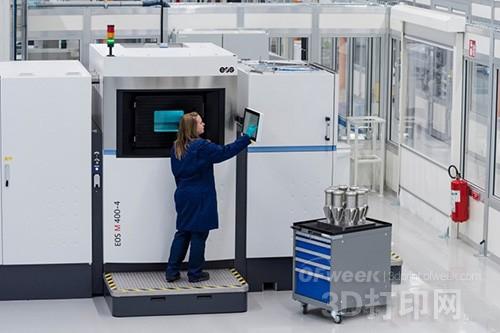The 3D printing of gas turbine components in power plants opens the door to production that was previously impossible. For nearly four decades, Siemens ’Swedish Finspan plant has manufactured gas turbines. This plant is located in a rock outcrop about half an hour west of the old industrial port city in Norway. The site was chosen because the flat roof of the granite outcrop provides an ideal basis for the production of heavy industrial equipment.

The heaviest model produced here weighs 290 tons and generates up to 54 megawatts of electricity, enough for large industrial facilities.
During a factory tour, you can see the assembly workers opening the lid of the SGT 800 turbine to install 30 gas burners driving its turbine blades. The gray matt gray burner is stored on the stand and is ready for installation. However, despite their complicated design, they have few visible welds.
The reason is that Siemens is using an additive manufacturing process. This technology is called additive manufacturing, also known as 3D printing, and is a real revolution in gas turbine production and many other industries.
This technology allows parts to be produced when a button is pressed, and the design can be changed with just a few mouse clicks. In addition, previously impossible designs can now become a reality, such as wound hollow parts, or seamless double-wall structures with honeycomb fillers.

In the new turbine, the welded burner head will be printed soon. Andreas Graichen, head of the additive manufacturing expert team at Siemens Finspong, said: "3D printers will soon produce the first half of these burners."
hydrogen
A welding engineer named Graichen came to Finspong more than 20 years ago, but in his career he has never experienced revolutionary changes like the past few months and years.
Next to Graichen's office is a workshop where several laser machines print metal powder layer by layer into new burners. Due to 3D manufacturing, the object has an outer wall marked by a gap, and an inner area characterized by a frame-like structure for testing alternative fuels (mainly hydrogen or syngas). Previously, these gases were usually produced as waste products in industrial processes. Although plant operators wish to use them, they cannot do so because the gases must be uniformly mixed by the burner.
Editor in charge: null
Leather Bar Chair is made of leather, can be available with italian leather, aniline leather and some synthetic leather. Now more customers prefer leather bar chair, cause it is soft and comfortable for seat, the leg is usually made of stainless steel and solid wood. We have produced some high quality bar chairs, like LEM leather bar chair, four seasons bar chair, some customers like these designs, if you are also interested in the leather bar chair, you can also contact us for further information.
Leather Bar Chair,Full Leather Bar Chair,Aniline Leather Bar Chair,Leather Kitchen Bar High Chair
DELO SOFA , https://www.modernluxuryfurnitures.com